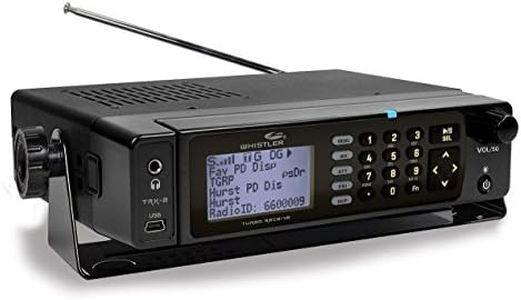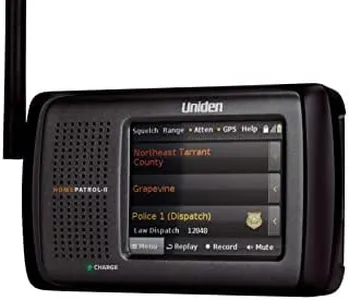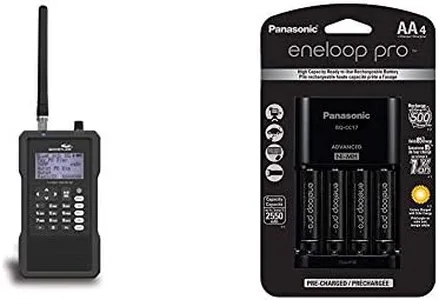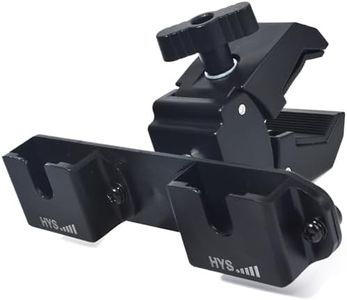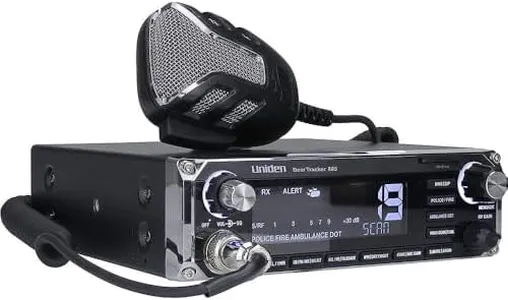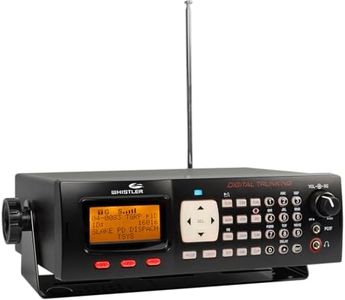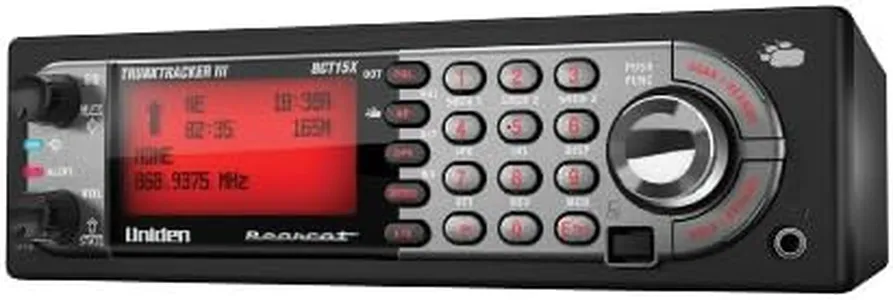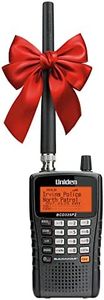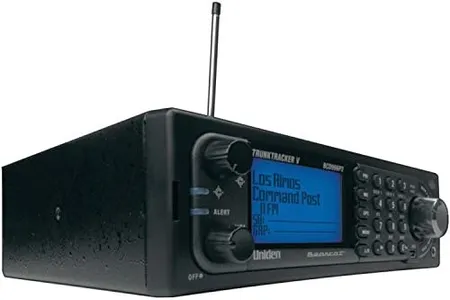10 Best Police Scanners 2025 in the United States
Our technology thoroughly searches through the online shopping world, reviewing hundreds of sites. We then process and analyze this information, updating in real-time to bring you the latest top-rated products. This way, you always get the best and most current options available.

Our Top Picks
Winner
Whistler WS1010 Analog Handheld Scanner – 400 Channels, Skywarn, Same Weather Alerts, Spectrum Sweeper, PC Programmable, Service Banks for Police, Fire, Marine, Air & Ham – Black
Most important from
1375 reviews
The Whistler WS1010 is a handheld analog police scanner that can store up to 400 channels across 10 memory banks, making it suitable for users who want to monitor various emergency and public service frequencies like police, fire, marine, and ham radio. It covers analog frequencies well but does not support digital or trunking systems, which means it might miss communication on newer networks used by some police and emergency services.
Its Skywarn and SAME weather alert features are useful for anyone interested in real-time weather updates, especially storm spotters. The scanner offers a Spectrum Sweeper function, helping to quickly find active transmissions nearby. Portability is a strong point here since it weighs just 7.7 ounces and runs on common AA batteries, making it easy to carry and power in the field.
The device is PC programmable, which allows more advanced customization through a computer, though this requires additional cables and software. While the display and audio are straightforward and functional, they are basic compared to more modern, feature-rich scanners. This model suits beginners or casual users who want a reliable analog scanner with good weather features and decent channel capacity, but it may not meet the needs of those requiring digital or trunked radio monitoring.
Most important from
1375 reviews
Whistler TRX-2 Digital Police Scanner – Desktop/Mobile Scanner with EZ Scan Software, APCO P25 Phase I & II, DMR, NXDN, and USA/Canada Database Preloaded
Most important from
266 reviews
The Whistler TRX-2 is a robust desktop police scanner designed to handle a wide range of radio systems, including popular trunking types like Motorola, EDACS, LTR, and P25, making it versatile for users who want to monitor many public safety channels. It supports both analog and digital signals, allowing access to older and newer radio transmissions. With its ability to store millions of channels on the included SD card, users can customize and manage extensive scan lists, which is great for serious hobbyists or professionals. The scanner offers advanced features like programmable alerts with LED indicators that can mimic emergency vehicle lights, and the convenience of audio recording and playback up to 50 hours, which is excellent for reviewing important transmissions later.
Its compact size and rugged build make it suitable for desktop use but not as portable as handheld models, so it’s best if you don’t need to carry it around frequently. The interface is user-friendly with familiar controls and a clear display, though the learning curve might be moderate for beginners given the depth of features. Audio quality is strong thanks to a high-output speaker, ensuring clear listening even in noisy environments. It also includes useful extras like weather and emergency alerts, plus access to a comprehensive preloaded database covering the US and Canada, which works without internet.
The device is somewhat bulky and heavier than handheld scanners, and the reliance on an SD card for data storage means managing files might be confusing for new users. Its USB connectivity for firmware updates and data streaming is a nice touch but requires a Windows 7 or later PC. The TRX-2 is especially well-suited for users who want a powerful, feature-rich desktop scanner capable of handling modern digital systems and extensive channel management, although it is less ideal if you prioritize portability or simplicity.
Most important from
266 reviews
Uniden HomePatrol-2 Color Touchscreen Simple Programing Digital Scanner, TrunkTracker V and S,A,M,E, Emergency/Weather Alert, Digital Capable, APCO P25 Phase 1 and 2, Covers USA and Canada
Most important from
1555 reviews
The Uniden HomePatrol-2 is a versatile and user-friendly police scanner that's designed to cover a wide range of frequencies, from 25 MHz to 1.3 GHz. It supports both analog and digital transmissions, making it a reliable choice for listening to various radio services. With its TrunkTracker V technology, it can follow trunked radio systems used by public safety groups, ensuring you stay updated with the latest transmissions in your area.
The scanner supports a substantial 2,525 channels, allowing you to monitor a broad spectrum of radio communications without constant reprogramming. The inclusion of the touchscreen interface simplifies navigation, making it remarkably easy to select and listen to your preferred channels. Additionally, the HomePatrol-2 is portable, with dimensions of 1.5 x 5.9 x 3.3 inches and a weight of just 1.15 pounds, making it easy to carry around. The package includes everything you need to get started, including a mini-USB cable, rechargeable batteries, a rubber antenna, and a table stand.
There are a few drawbacks. The scanner is not water-resistant, which limits its use in adverse weather conditions. Additionally, its maximum talking range of 2 miles might be limiting for users in more extensive areas. Some users might find the reliance on AA batteries inconvenient, even though they are included. Despite these minor issues, the Uniden HomePatrol-2 remains a solid choice for anyone looking to monitor local emergency services and other radio communications with ease.
Most important from
1555 reviews
Buying Guide for the Best Police Scanners
Choosing the right police scanner can be a bit overwhelming, but with the right approach, you can find a model that fits your needs perfectly. Police scanners allow you to listen to communication between law enforcement and other emergency services, which can be useful for staying informed about local incidents. When selecting a police scanner, consider the following key specifications to ensure you get the best fit for your requirements.FAQ
Most Popular Categories Right Now

